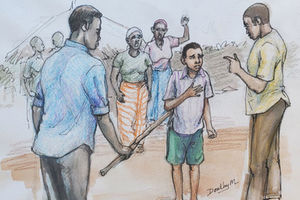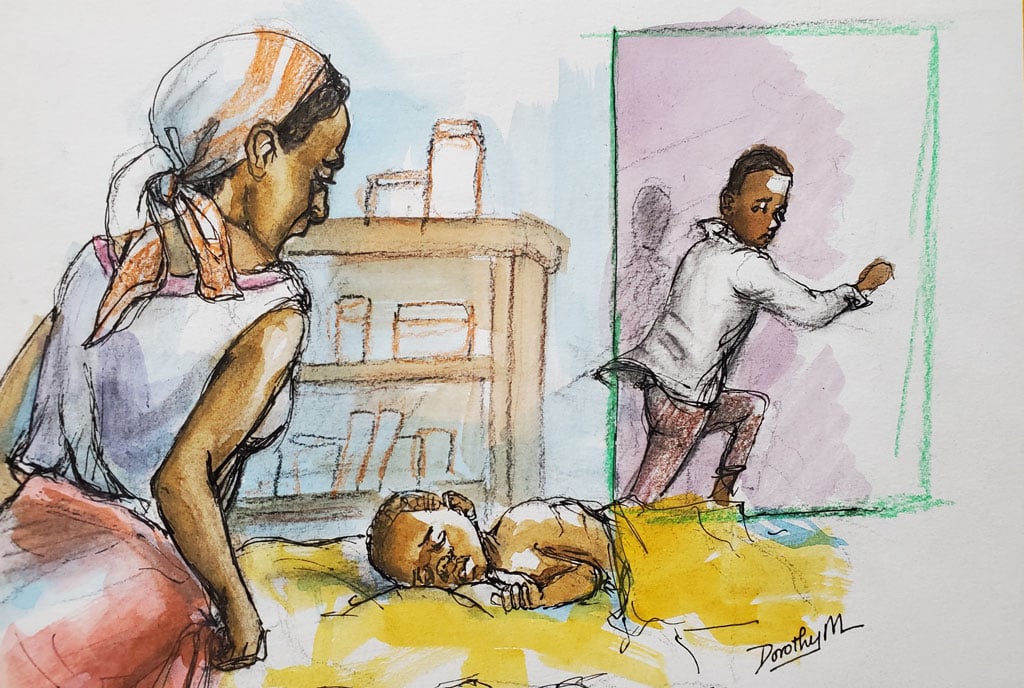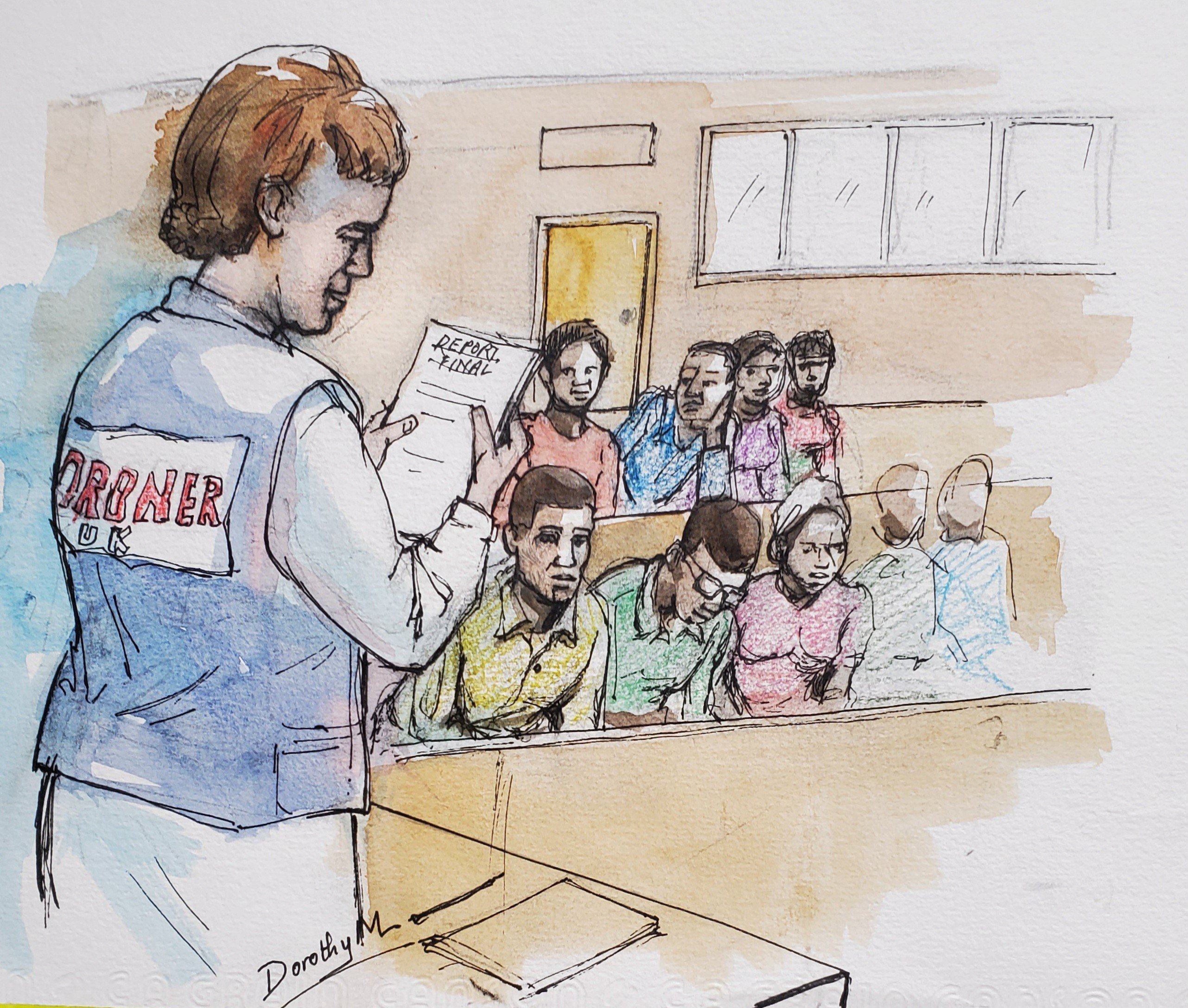
The forensic postmortem examination is very important in establishing some of the ingredients of the offence of murder to the pre-requisite standard of “beyond reasonable doubt”. Apart from confirming the fact of death, the postmortem examination, in most cases, will establish if the death was unlawful by assessing the cause of death. A postmortem examination is the gold standard of establishing the cause of death. Courts have many a times used the findings of a postmortem examination to infer malice aforethought. Scientific investigations such as DNA analysis, have also been used to irrefutably link an accused person to a death that is subject to judicial interrogation.
Forensic postmortem examinations must, however, be performed to acceptable standards within circumstances. Doctors performing postmortem examinations must carefully obtain a history of what happened to guide, but not bias, them during the postmortem examination and eventually explain their findings.
Pictures of injuries observed, both external and internal, on a dead body must be taken to guide independent assessment of the injuries that have been documented. Bits of tissue need to be sampled for examination under the microscope.
Auxiliary investigations such as toxicology and DNA, are also be important in some cases. Each case is, however, unique and needs to be investigated according to circumstances. But a person who carries out a postmortem examination should ultimately be able to reconstruct, with some accuracy, the events leading to the death.
In some instances, some postmortem examinations have left a lot to be desired. And some courts have used such postmortem examinations to occasion gross miscarriages of justice. And none of such postmortem examinations could be more glaring than that which was used to convict Junior, a 14- year-old schoolboy on holiday, of the murder of a two month old baby girl, who was found dead in the home of her parents during a funeral.
The child had been breastfed and taken by her mother to sleep in their house. The schoolboy, who was found in the house at the time the dead body was discovered, insisted he had gone to the house to catch some sleep.
The doctor who carried out the postmortem examination told court that the baby died as a result of strangulation, as there were ligature marks on the neck of the baby, which was evidence that a rope was used to strangle the baby. However, no rope was found at the crime scene and nobody ever saw any injuries on the baby’s neck or anywhere else on the body. Many babies have been found dead in their beds or cots and these have been attributed to the sudden infant death syndrome (SIDs).
SIDS is defined as the sudden and unexpected death of an infant less than one year, with onset of the lethal episode that occurs during sleep, which remains unexplained after a thorough investigation including performance of a complete postmortem examination.
The investigation will not identify a specific and convincing cause of death, although frequently, there are minor pathologic findings. It has been suggested that SIDS is associated with breathing against an obstructed upper airway or deep rasping. Some scientific studies suggest that the phenomenon is associated with certain bacterial infections and abnormalities of the nervous system and other congenital defects.
SIDS occurs primarily between one and five months, with 90 percent occurring by the sixth postnatal month. It is the most common cause of postnatal infant deaths in developed countries, with six SIDS deaths occurring everyday in the US. This death affects both genders, but is more prone in the male neonate. It has also been suggested that some infants are more prone to SIDS, especially at critical developmental stages and when there are external triggers.
Another common cause of death in infants found dead while sleeping, is suffocation and other conditions during which the baby is exposed to insufficient oxygen levels. One of these may be the sleeping posture of the baby. In such a case, the baby’s head may be covered by blankets or sheets in the bed.
Sometimes, babies are found with their faces directly into the sleep surface. Studies show that avoidance of head covering leads to a 25 percent reduction in SIDS deaths. There are no definite features found at a postmortem examination that can be used to attribute death to oxygen deficiency. However, the deaths associated with oxygen deficiency in infants involve aspiration after feeding and sleeping accidents.
In the case under scrutiny, the postmortem examination was carried out by a non-specialist, who most likely, did not use the recommended technique of bloodless neck dissection during the postmortem examination to demonstrate strangulation. It is also apparent that the doctor did not exhaust other possible causes of such deaths.
There was no evidence that photographs were taken during the postmortem examination especially of the ligature mark that the doctor testified about which ligature mark no other person saw. There is no evidence that tissue samples were taken and examined under the microscope. This would have excluded aspiration as a cause of death.
That the postmortem examination was not conclusive and inaccurate is not in doubt. Although the doctor reported that the baby’s hymen was open up to the cervix, the doctor did not find any bleeding in the genitals or anal canal of the baby. The baby was fully clothed at the time the mother found her unresponsive.
It has been stated that the failure in the criminal justice system involves all the actors including the investigators, the doctors, the defense lawyers and the Court itself. The safety of the criminal justice system relies, in part, on accurate and objective forensic evidence
Court convicted Junior using the legal doctrine of “last seen alive”. The law prescribes that the person last seen with the deceased before his or her death was responsible for that death and is therefore expected to provide any explanation as to what happened.
This principle is only applicable if it is proved beyond reasonable doubt that the death of the deceased was unlawful. The baby’s death cannot have been said to have unnatural considering the circumstances.
Junior was also let down by his lawyer, who did not raise these crucial issues during cross-examination during the initial trial. Errors made during this time are often difficult to cure during subsequent appeals which appeals are often lengthy in terms of time.
And in jurisdictions were judicial reviews are virtually non-existent Junior will have to live with this conviction for the rest of his life but a total mistreat of the criminal justice system.
Scrutiny
In the case under scrutiny, the postmortem examination was carried out by a non-specialist, who most likely, did not use the recommended technique of bloodless neck dissection during the postmortem examination to demonstrate strangulation. It is also apparent that the doctor did not exhaust other possible causes of such deaths.
There was no evidence that photographs were taken during the postmortem.








